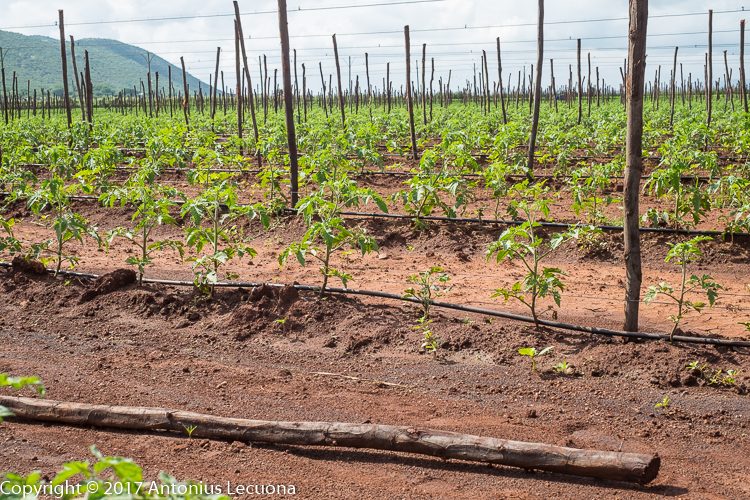
Planting time of field grown tomatoes
Tomatoes are warm season crops. So unless your winters are warm, you will not be able to plant in the winter. The average farmer will plant as early as possible so that he can be first on the market. So being first is good for the bottom line, but there might be a late cold spell and all efforts go down the drain. There is no set date when you can plant tomato seedlings, you will have to monitor the day and night temperatures of your whole planting area to establish the best time. If your average night temperature is below 10°C (55°F), the plant will not grow! I think that is a good benchmark to go by. As soon as night temperatures go above 12-14 °C (53-57°F) you can consider transplanting, only if the risk of frost is low. Note that north facing and south facing slopes will have an effect on planting time as well. South facing fields tend to be colder, experience more frost and less sunlight. These slopes can be used for cold weather crops like lettuce which do not perform that well in hot areas. Soil is more influenced by the angle of the slope. So again northern facing slopes in southern hemisphere are ideal for early crops but remember, higher soil temperatures promote disease development later in the season. Soil type such as clay content, water content and colour will also play a role in the temperature.
Tomatoes are seldom sown, so you need seedlings for best results. Making seedlings also provides a stronger and healthier plant than sowing directly into the soil. Seedlings are available at local nurseries and for commercial growers there are commercial nurseries that specialize in vegetable seedlings.
So depending on your own climate, planting out of tomato seedlings can be done close to the end of spring. You can try planting out mid spring if you don’t have frost, but often tomato plants will stop growing and wait until the temperatures are right, so there is no real advantage gained. Quite the contrary, a farmer runs the risk of a sudden frost spell losing all his seedlings.
The latest time you can plant is when there is a 90 day harvesting period available. You can harvest the crop in shorter time but it will affect your profit margins as the total tomato yield will be lower.
If temperatures stay low in early summer, expect a delay in first harvest. The opposite is also true, if summer is early, one can expect earlier pickings but cold delay is always much longer.
The tomato seedling stage, flowering stage and fruit set periods are critical. It is the most susceptible period for moisture shortage. Quite often moisture shortage is caused by blocked dripper lines. Any moisture stress during these growth periods will have a negative effect on yields and quality of the tomato fruit.

Field grown tomato plants. The third plant from the right has a blocked dripper line and will most likely die in extreme heat.
Quite often the previous crop can delay transplanting, especially if the crop has a once off harvesting period such as cabbages or lettuce. Although most harvest periods are not all perfect and removed in one or two days, stopping early and leaving a large amount of potential lettuce head on the field is bad for profits and advantages must be weight up against planting the tomato crop earlier.





